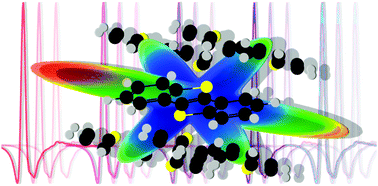Peter A. Banks, Jefferson Maul, Mark T. Mancini, Adam C. Whalley, Alessandro Erba,Michael T. Ruggiero

https://pubs.rsc.org/en/content/articlelanding/2020/tc/d0tc01676d#!divAbstract
The thermomechanical response of organic semiconducting solids is an essential aspect to consider in the design of materials for advanced applications, and in particular, flexible electronics. The non-covalent intermolecular forces that exist in organic solids not only result in a diverse set of mechanical properties, but also a critical dependence of those same properties on temperature. However, studying the thermoelastic response of solids is experimentally challenging, often requiring large single-crystals and sensitive experimental apparatus. An alternative contactless approach involves using low-frequency vibrational spectroscopy to characterize the underlying intermolecular forces, and then combining this information with solid-state density functional theory simulations to retrieve the mechanical response of materials. This methodology, which only requires poly-micro-crystalline sample (compared to large single-crystals), leverages recent advances in the quasi-harmonic approximation to predict the temperature evolution of crystalline structures, dynamics, and associated forces, and then utilizes this information to determine the elastic tensor as a function of temperature. Here, this methodology is illustrated for two prototypical organic semiconducting crystals, rubrene and BTBT, and suggests a new alternative means to characterizing the thermoelastic response of organic materials.

No comments:
Post a Comment